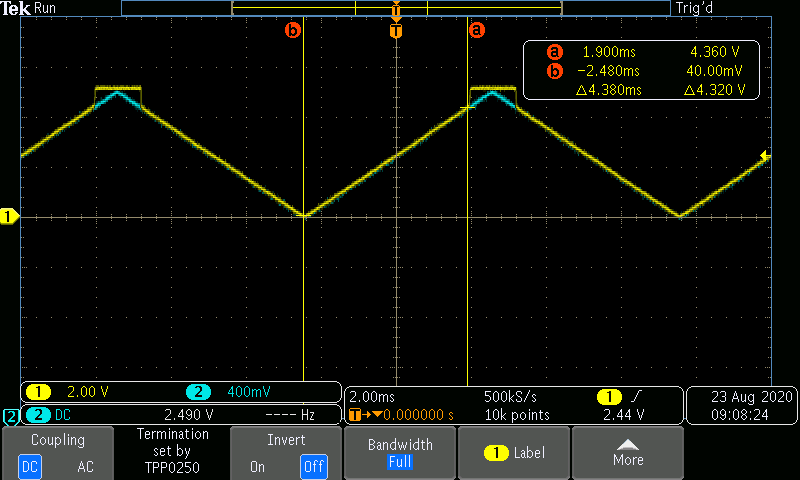Signal input is a 1 Vpp triangle wave at 100 Hz with an offset of 2.5 VDC. Vcc is approximately 5.12 VDC from USB. Amplifier set for minimum gain of 5. Output voltage rises in a linear fashion as expected, but jumps to full-scale when the input exceeds approximately 0.85 VDC and remains there until the input drops below 0.85 VDC.
Schematic attached. Oscilloscope capture attached.
NOTE: The amplifier output channel is the yellow trace and the input is the blue trace. The attenuation on the output channel (yellow trace) for the scope is set to 1/5th that of the input and the two signals overlaid to illustrate the issue. I've tried removing the X2Y cap (C3 & C7) and resistors R3 and R8 to isolate the IN-Amps. There was no change in performance.
What am I doing wrong?
-
Ask a related question
What is a related question?A related question is a question created from another question. When the related question is created, it will be automatically linked to the original question.



